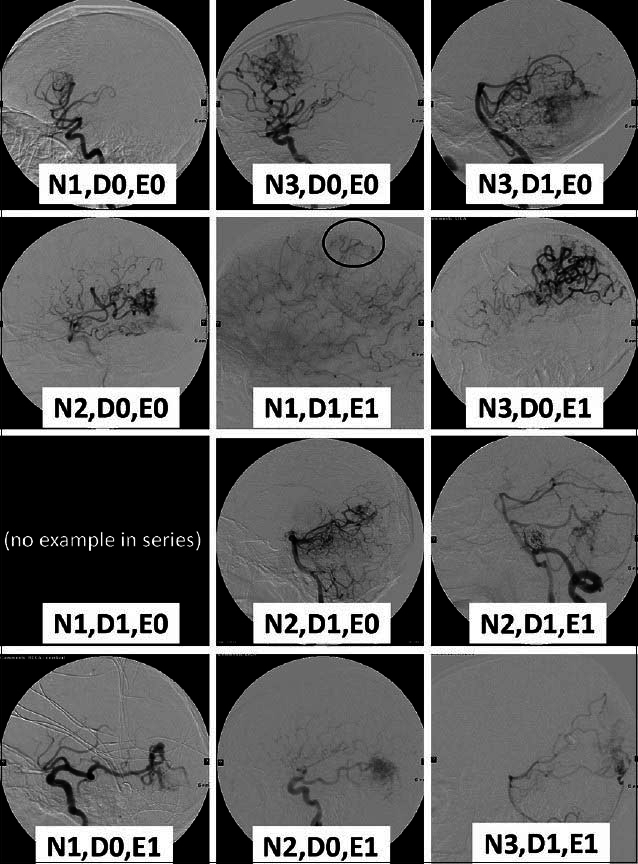A modified anterior temporal approach for low-position aneurysms of the upper basilar complex
Date of publication: 22-Jan-2015
Background:Although surgery for aneurysms of the upper basilar complex is generally accomplished by a pterional or subtemporal approach, both techniques have disadvantages. Therefore, attempts have been made to combine both the approaches, such as an anterior temporal approach, which exposes the anterior aspect of the temporal lobe during standard fronto-temporal craniotomy. However, in all these techniques, the temporal vein is sacrificed to allow posterior retraction of the temporal lobe, which may cause venous infarction in the temporal lobe.
Vacuum-assisted closure of necrotic and infected cranial wound with loss of dura mater: A technical note
Date of publication: 22-Jan-2015
Background:Complex cranial wounds can be a problematic occurrence for surgeons. Vacuum-assisted closure devices have a wide variety of applications and have recently been used in neurosurgical cases involving complex cranial wounds. There is only one report regarding the use of a vacuum-assisted closure device with loss of dura mater. We report a complicated case of a necrotic cranial wound with loss of dura mater.
Symptomatic foramen of Magendie arachnoid cyst in an elderly patient
Date of publication: 20-Jan-2015
Background:Arachnoid cysts (ACs) are congenital anomalies of the central nervous system and arise in virtually all locations where the arachnoid membrane exists. Posterior fossa ACs are considered to develop in the posterior aspect of the rhombencephalic roof plate and do not communicate freely with the fourth ventricle or perimedullary subarachnoid space. Although posterior fossa ACs have been reported a number of times, ACs arising from the foramen of Magendie are very rare.
Anti-epileptic prophylaxis in traumatic brain injury: A retrospective analysis of patients undergoing craniotomy versus decompressive craniectomy
Date of publication: 20-Jan-2015
Background:Seizures account for significant morbidity and mortality early in the course of traumatic brain injury (TBI). Although there is sufficient literature suggesting short-term benefits of antiepileptic drugs (AEDs) in post-TBI patients, there has been no study to suggest a time frame for continuing AEDs in patients who have undergone a decompressive craniectomy for more severe TBI. We examined trends in a level-II trauma center in southern California that may provide guidelines for AED treatment in craniectomy patients.
Rapid aneurysm growth and rupture in systemic lupus erythematosus
Date of publication: 20-Jan-2015
Background:Subarachnoid hemorrhage (SAH) due to intracranial aneurysm rupture is a major neurosurgical emergency associated with significant morbidity and mortality. Rapid aneurysm growth is associated with rupture. Systemic lupus erythematosus (SLE) is a multi-system autoimmune disorder whose complications can include cerebral vasculitis and vasculopathy. Intracranial aneurysms are not known to occur more frequently in SLE patients than the general population; however, aneurysm growth rates have not been studied in SLE.
Characteristics of the stroke alert process in a general Hospital
Date of publication: 14-Jan-2015
Background:The organized stroke alert is critical in quickly evaluating and treating patients with acute stroke. The purpose of this paper was to further understand how this process functions in a moderate sized general hospital by exploring the effects of patient location and time of day on the pace of evaluation and the eventual outcome of evaluation.
Neurosurgery concepts: Key perspectives on dendritic cell vaccines, metastatic tumor treatment, and radiosurgery
Date of publication: 14-Jan-2015
Background:This is a laboratory study to investigate the effect of adding brain-derived-neurotrophic factor (BDNF) in a poly (N-isopropylacrylamide-g-poly (ethylene glycol) scaffold and its effect on spinal cord injury in a rat model.
Binswanger disease may benefit from omental arteries
Date of publication: 07-Jan-2015
A proposed grading system for endovascular treatment of cerebral arteriovenous malformations: Buffalo score
Date of publication: 07-Jan-2015
Background:The Spetzler–Martin arteriovenous malformation (AVM) grading system has proven to be useful in guiding treatment of cerebral AVMs with craniotomy. It is based on anatomical characteristics each of which makes surgical resection of an AVM more difficult, namely, deep venous drainage, eloquence of surrounding tissue, and large nidus size. A higher score correlates with more complications after treatment. Although this grading system has proven reliable over time, it does not reflect the major determinants of risk associated with endovascular treatment. The authors developed a grading system unique to endovascular treatment of cerebral AVMs.
A clinical scale to communicate surgical urgency for traumatic brain injury: A preliminary study
Date of publication: 05-Jan-2015
Background:While the Glasgow Coma Scale (GCS) provides a tool for evaluating traumatic brain injury (TBI) patients, there is no widely used scale that provides guidance for surgical management. This study introduces a scoring system that physicians potentially could use to determine and communicate the need for surgical decompression in TBI patients. The proposed system is designed to be both comprehensive and easy to use.














